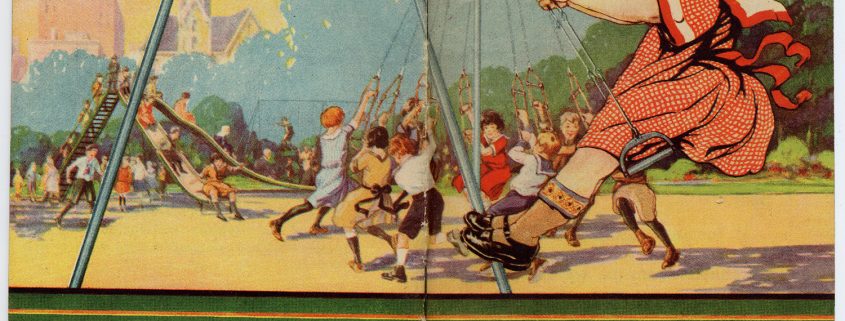What is trade literature anyway?
Funny you should ask! The Smithsonian Libraries have one of the most outstanding collections of trade literature in the United States. Affiliations staff were honored recently to get an up-close, personal view of some samples that were presented by three of the collection’s experts.
 What is it? Trade literature is mass produced by manufacturers to promote and explain their products to wholesalers and retailers. The Smithsonian’s collection numbers at least 400,000 pieces (it’s still being catalogued!), with the bulk of the collection dating from 1880-1950. Because this genre of books, pamphlets, brochures, et al, were meant to be discarded (some manufacturers even encouraged an annual purge), the ephemera is quite rare.
What is it? Trade literature is mass produced by manufacturers to promote and explain their products to wholesalers and retailers. The Smithsonian’s collection numbers at least 400,000 pieces (it’s still being catalogued!), with the bulk of the collection dating from 1880-1950. Because this genre of books, pamphlets, brochures, et al, were meant to be discarded (some manufacturers even encouraged an annual purge), the ephemera is quite rare.
And beautiful. And surprising. And revelatory. The Smithsonian’s seed catalogs feature wildly colorful botanical illustrations. Some appliance catalogs from the 1950s explain “what women really want,” an illustrative glimpse into social mores of the period. Floor and wallcovering sample books reveal startlingly modern designs linking them to Art Deco and Bauhaus sensibilities. World War II era catalogs exemplify how American manufacturers contributed to the war mobilization effort. Catalogs of turn-of-the-century fountains harken back to Renaissance drawings in their precision.
Why do we collect this? Mostly because Smithsonian curators use these to decipher the uses, specifications, and contexts (social/political/economic, among others) of the artifacts in our collection. It comes in handy for other folks as well; for example, the National Park Service regularly consults our collection when restoring its historic structures. Lawyers use it frequently for patent cases.
How can Affiliates use these? In many ways as it turns out!
1) Research. Do you have a 19th century carriage, and want to know more about it? It’s likely we have the manual that accompanied its distribution. Same with cameras, automobiles, sewing machines, silos, bicycles, wagons, scientific equipment, on and on and on!
2) Images. The wonderful Libraries staff can scan images and send you a high resolution .tif file. With the proper paperwork, these could serve as graphics in your exhibition or in interpretative & education materials.
3) Loans. Although rare and fragile, some of the specimens can travel and be exhibited.
I encourage you to explore this fascinating collection further, and as always, never hesitate to ask us questions about it!



